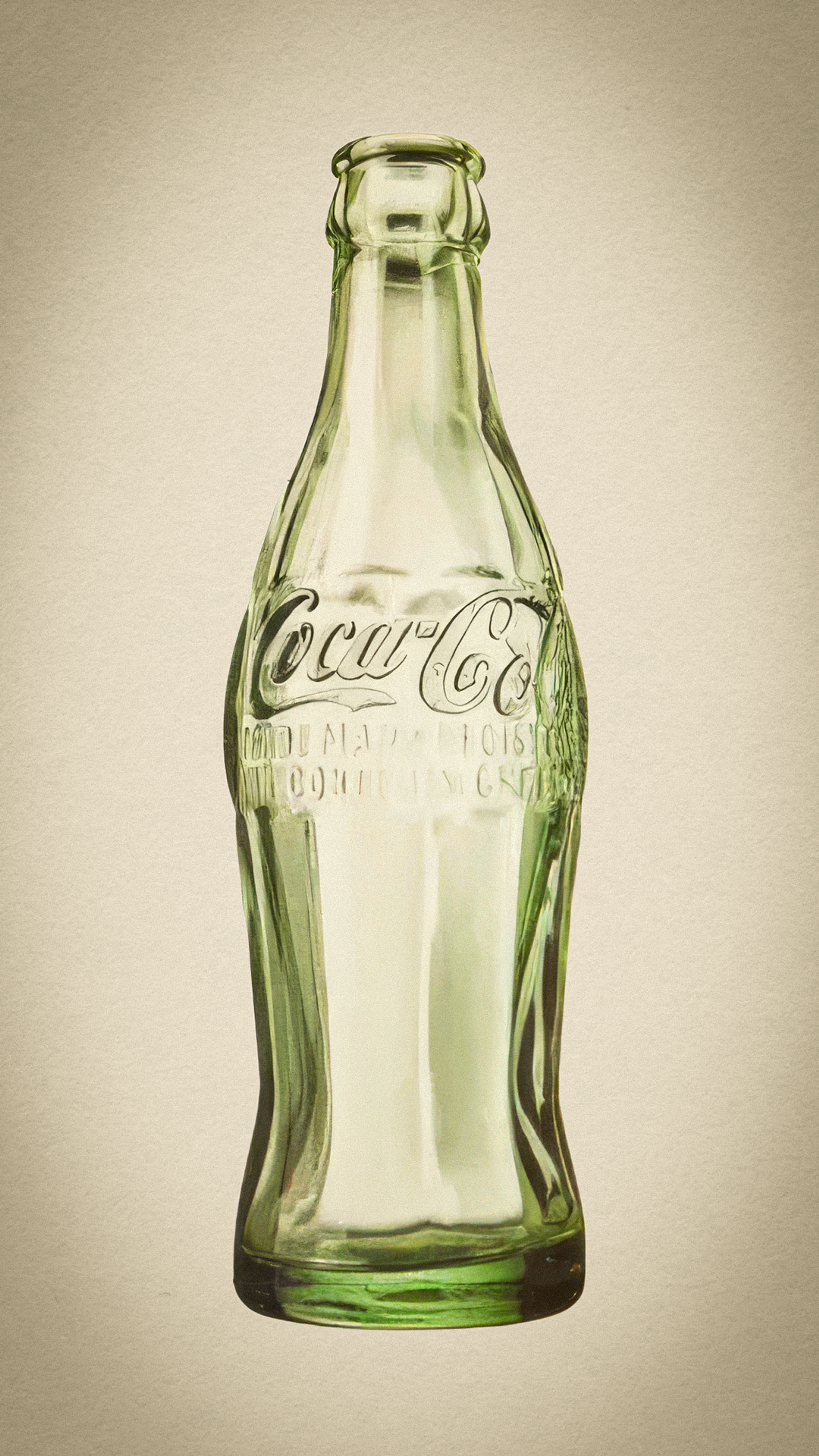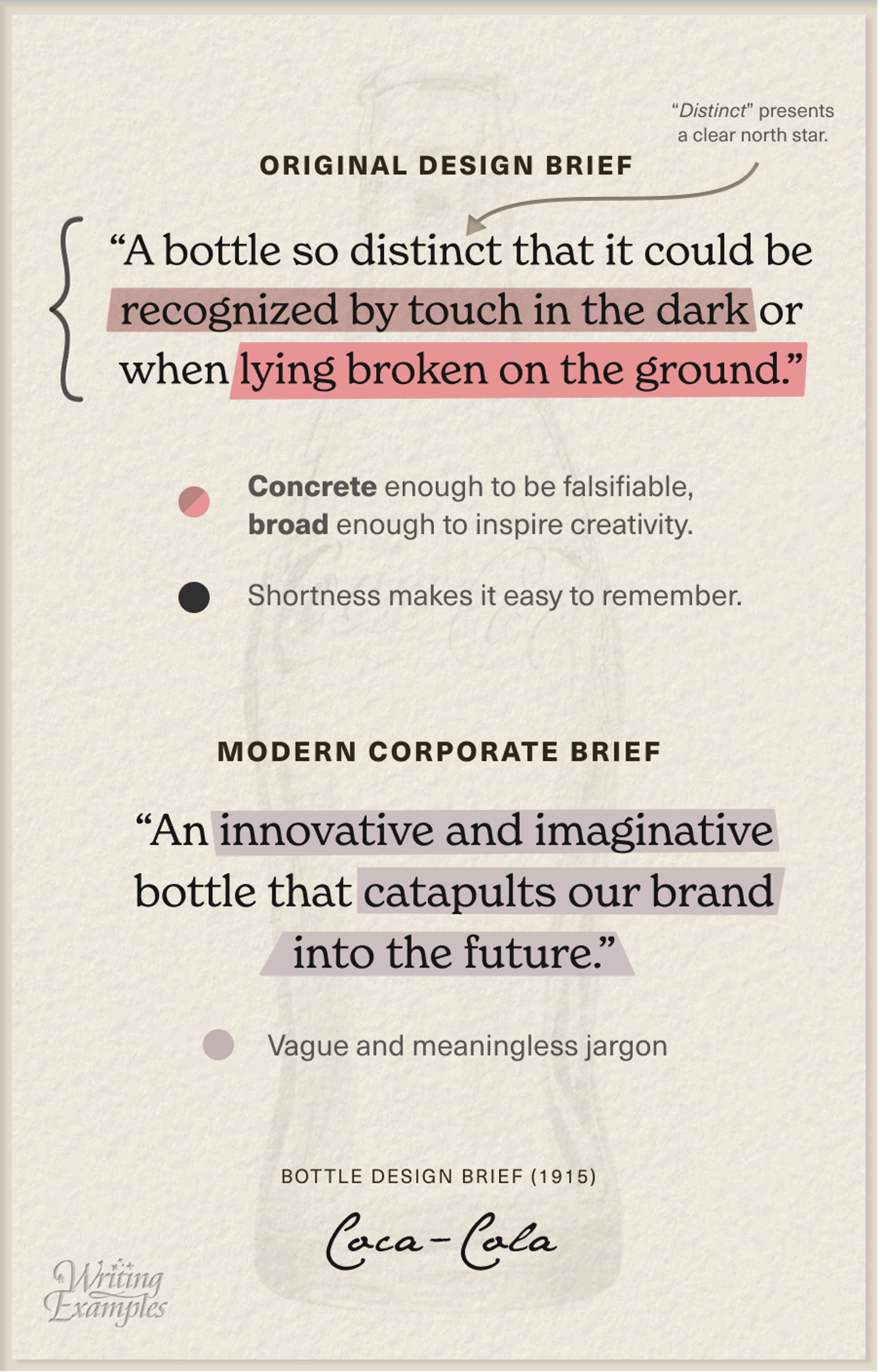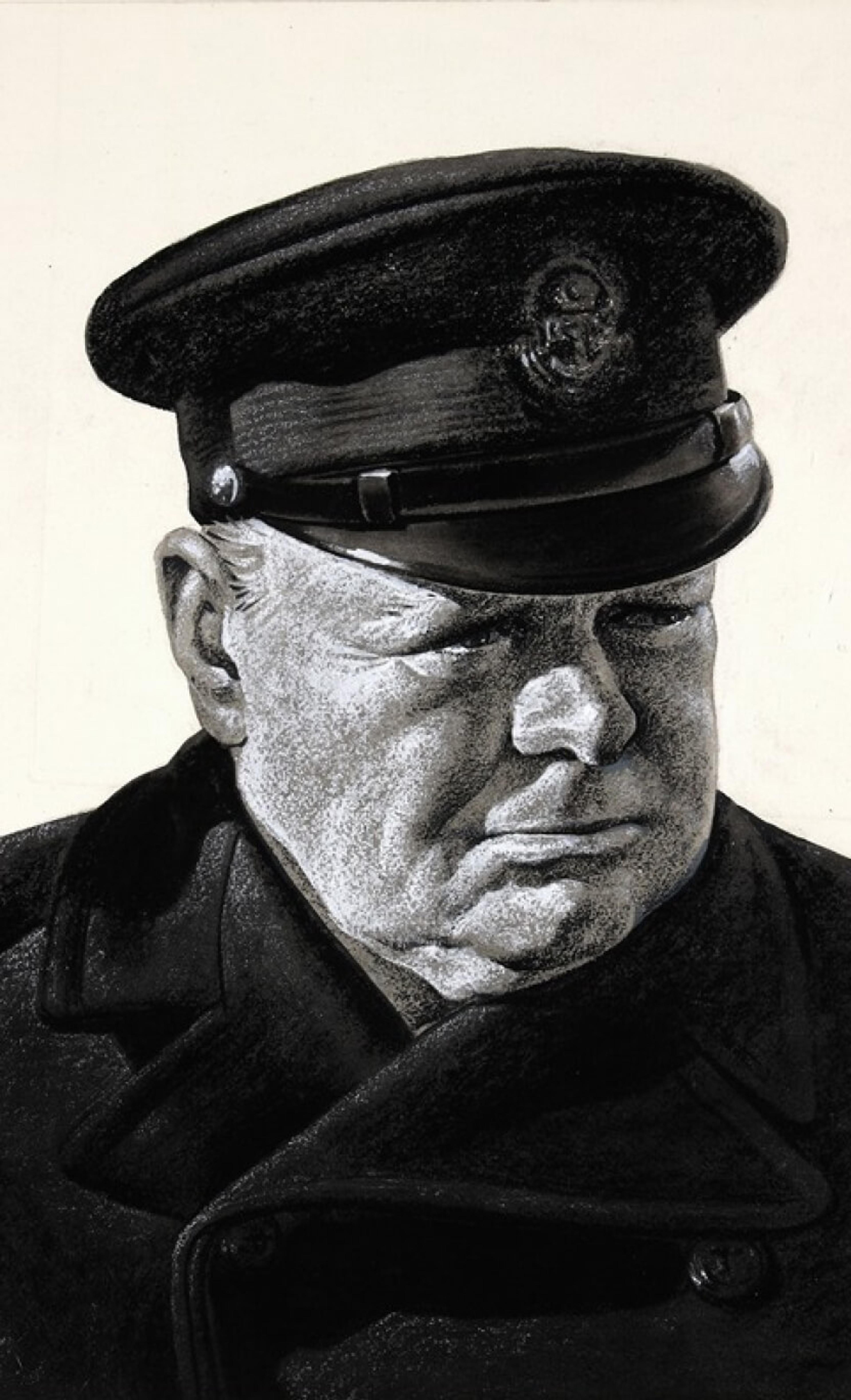HOW TO
Write a DesignBrief
By
David Perell


his is the design brief that led to the iconic Coca-Cola bottle you’ve seen a million times.
Notice the combination of possibility and specificity in this brief. It gave designers freedom to be imaginative while leaving no ambiguity for what success looked like. Can you recognize it in the dark? Or with it lying broken on the ground? If not, go back to the drawing board.
Concrete details stick in the mind. Studies show that people are more likely to remember concrete words like car or airplane than abstract ones like motion or curiosity. When it comes to memory, the shortness helps too. You can imagine yourself thinking about the brief while driving or taking a shower, where creative ideas are likely to emerge.
Concreteness is the antidote to Corporate Speak. In this case, the typical boardroom design brief statement would’ve read something like: “An innovative and imaginative bottle that catapults our brand into the future.” Though this vision is similar, it lacks the concreteness that makes the 1915 Coca-Cola one so effective.
Other short and concrete vision statements include:
- JFK: “We choose to go to the Moon in this decade.”
- SpaceX: “Make humanity multiplanetary.”
- Microsoft: “A computer on every desk and in every home, all running Microsoft software.”
- Dropbox: “One place for all your stuff, wherever you are.”
- Amazon: “Earth’s most customer-centric company, where customers can find and discover anything they want to buy online.”
No, this wasn’t an ad for Coca-Cola but you should sure as hell take note that a good design is concrete enough to be falsifiable, but broad enough to inspire creativity.
Want to go deeper?
- 01
Academic Paper
- 02
Book
Read More
Write like the Greats
New Writing Examples, right in your inbox.
“Beautiful, playful, and high-quality. Kudos.”
Clayton
from Missouri, USA



